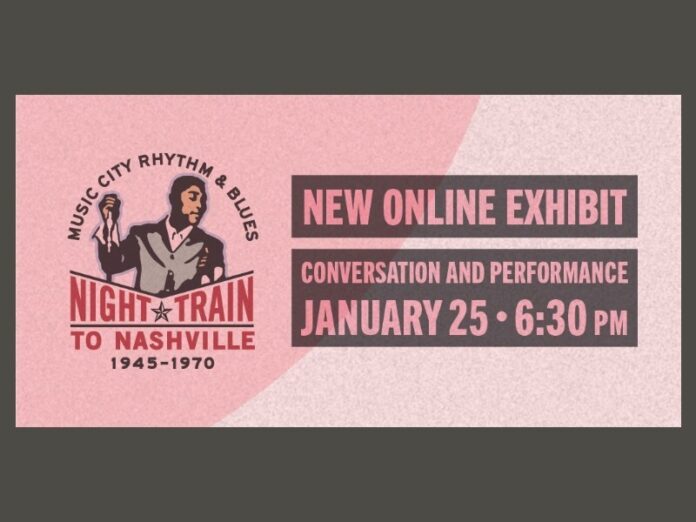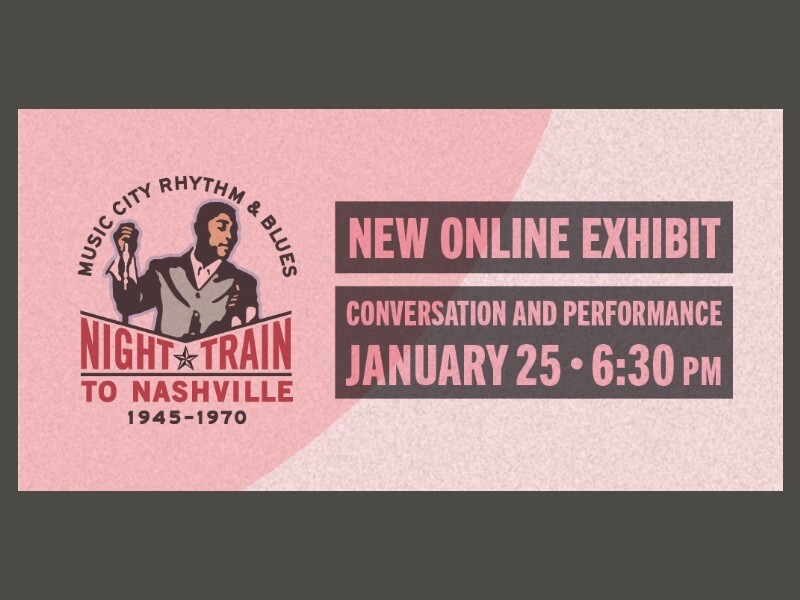
Exhibit highlights Nashville’s pioneering and influential R&B history
The Country Music Hall of Fame® and Museum has announced its newest online exhibition. Night Train to Nashville: Music City Rhythm & Blues, 1945-1970which can be accessed for free on the museum’s website. Multimedia exhibits explore the key stories of Nashville’s vibrant and pioneering R&B scene, and their key role in helping the city become a world-famous music center.
Enabled by a major grant awarded by the National Endowment for Humanities (NEH), the online exhibition brings together the physical exhibits of the award-winning museum of the same name featured in a 5,000-square-foot temporary gallery. Revisit, update, save. Outer space almost 20 years ago (March 2004 to December 2005).
Night train to Nashville Explore Nashville’s R&B activity in the decades after World War II. Nashville’s country music industry was still in its infancy, so the city was also a hotbed of R&B in the late 1940s, ’50s and ’60s, home to Country Music Hall of Fame members Ray Charles, Arthur Alexander, Ruth Brown and Jimi Hendrix. Famous performers such as , Etta James and Little Richard contribute to the city’s rich musical heritage. During this time, R&B reigned alongside country music in the city’s clubs and studios, radio and national television.
Multimedia exhibits showcase a vast array of historical photographs, performance videos, audio recordings, musical instruments, show posters, stage wear, and other rare items featured in the original exhibits.The museum also mounts physical Night train to Nashville It will be on display at the gallery in January 2024, coinciding with the original exhibition’s 20th anniversary.
” Night train to Nashville This story provides important context for how R&B played a key role in Nashville becoming ‘Music City,'” said Kyle Young, CEO of the Country Music Hall of Fame and Museum. . “Like the first exhibit in 2004, the online version offers a multifaceted perspective, exploring race relations and the city’s black music culture at the time, and how they contributed to the making of this great music and the evolution of Nashville. Against the backdrop of urban change, as cities develop into major recording centers, racial barriers are tested and sometimes broken in band stands, in recording studios, and on the airwaves. was.”
To mark the launch of the online exhibit, the museum will partner with the National Museum of African American Music (NMAAM) to host free conversations and performances with key members of the historic Nashville R&B music scene.program above Wednesday, January 25th 6:30 p.m. At the Ford Theater at the Country Music Hall of Fame and Museum, Levert Allison (of Fairfield Four), Jimmy Church, Peggy Gaines Walker, Frank Howard, Charles “Wig” Walker and other participants.of the museum Michael Gray and NMAAM’s Dr. Brian Pearce participate in the discussion. Tickets can now be reserved here.
of Night train to Nashville The narratives in the online exhibits are organized around distinct themes.
- The roots of Nashville R&B, which largely evolved from pre-WWII jazz, blues and gospel. In segregated Nashville, jazz and blues flourished in black nightclubs and theaters, gospel influences took hold in churches, and musicians learned their craft in the city’s black high school and college education programs.
- The city’s live music scene, focused on respected black music venues such as New Era Club, Club Del Morocco and Club Baron. Cultural icons like Little Richard and Jimi Hendrix apprenticed on the Nashville bandstand.
- Nashville’s influential R&B radio includes a powerful 50,000-watt WLAC that blasted R&B on the midnight airwaves, and WSOK and WVOL, one of the first stations in the country to adopt an all-black format. will be
- R&B on TV, including Nashville-produced syndicated TV shows Night Train and The !!!! Beat. The show featured some of the city’s top musicians and singers alongside R&B’s top stars.
- The city’s R&B recording industry included well-known producers and a variety of hit R&B recordings that originated in Nashville. Etta James recorded an impassioned live album, Etta James Rocks the House, at the New Era Club, while Arthur Gunther performed R&B for the famous Nashville blues label Exero Records. recorded the classic “Baby Let’s Play House”.
- R&B Legacy and Lament explores key developments in the late 1960s, from the soaring rise of Robert Knight’s R&B pop crossover hit “Everlasting Love” (recorded in Nashville) to the so-called “urban regeneration” and the depth of routing. Examine up to From Interstate 40 down Jefferson Street, it eventually devastates the city’s vibrant R&B nightlife.
- The R&B songwriter and performer’s strong ties to country music carried over to Nashville’s post-war stages and studios. These include his R&B singer-songwriters like Nashville native Bobby Hebb. Bobby Hebb wrote and recorded the million-selling crossover hit “Sunny” and performed at the Grand Ole Opry in the early 1950s as a member of Country Music Hall of Fame member Roy Acuff’s band. .
Online visitors also have access to a complete video archive of public programs hosted by the museum in relation to the original. Night train to Nashville An introduction to Nashville’s R&B history, including concerts, panel discussions, and more. Online exhibitions and future physical exhibitions will also be supported by new public programs.
During the first run of physical exhibits, Night train to Nashville The Museum was awarded the Bridging the Gap Award (2006) by the Nashville Chapter of the NAACP for promoting interracial understanding. His album companion to the exhibition of the same name won the Grammy Award for Best His Historical Album (2004).
The museum’s other online exhibits include: Match the sound: The rodeo tailor who made a country star shine brighter When Dylan, Cash & Nashville Cats: New Music City, respectively, received the NEH CARES Grant Award.The museum’s immersive website is also available Historic Music Row: Nashville’s Creative Crossroadsreceived a major grant from the National Commission on Historical Publications and Records.
of Night train to Nashville The online exhibition was made possible by a grant from NEH’s Sustaining the Humanities through the American Rescue Plan., Intended to support the vital role of the humanities Play in our country and support cultural institutions affected by the COVID-19 pandemic. The non-profit museum is one of eight cultural and educational institutions in Tennessee that receive funding. About 115 museums, historic sites and historical societies were awarded grants nationwide.

